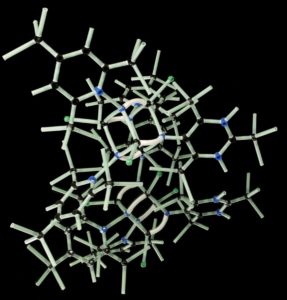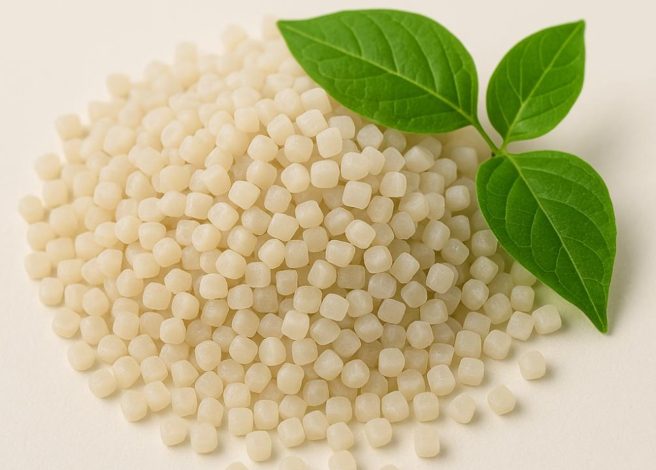At a Glance
- PEF food packaging delivers superior barrier properties — it blocks gases and moisture better than PET, extending shelf life.
- It’s fully bio-based and recyclable, offering a more sustainable alternative to fossil-fuel plastics.
- Adoption challenges include costs and supply, but pilot projects show real-world promise.
- PEF fits brand goals for freshness and sustainability, attracting forward-thinking food businesses.
Before we discuss PEF food packaging, we should acknowledge that change can be intimidating — even downright unsettling. Remember how we struggled to navigate the transition from cable to streaming services? (So many remote controls and passwords to remember!) Not long ago, the concept of cars powered solely by electricity seemed like something from a science fiction film rather than an everyday reality. And just when we’ve grown attached to one actor’s portrayal of Batman, Hollywood introduces yet another face behind the mask, making it nearly impossible to keep pace with Gotham’s ever-changing guardian.
The food packaging industry finds itself at a similar crossroads. Businesses want new solutions due to the push for sustainability and worries about single-use plastics. They want options that maintain product quality and keep the consumer experience strong. Enter PEF (polyethylene furanoate) — a promising material that’s generating buzz as a potential successor to the industry-standard polyethylene terephthalate (PET) plastic. But is this newcomer truly the future of food packaging, or just another overwhelming change to navigate?
This week, we connected with Conor Carlin, the Founder and President of Clefs Advisory LLC. Conor brings impressive credentials as the 2024 President of the Society of Plastics Engineers and former North American General Manager for ILLIG. He has built his reputation as a specialist at the convergence of packaging and sustainability, with expertise that covers materials, packaging and recycling technologies, policy initiatives, commercial strategy, and market intelligence.
Let’s look at what food business experts should know about this new packaging material and how it could affect the industry.
What Is PEF?
 Think of PEF as PET’s plant-based cousin. While they look similar and behave in many of the same ways, they come from different sources. PEF was discovered in the 1950s. However, companies have only focused on developing it commercially in the last 20 years.
Think of PEF as PET’s plant-based cousin. While they look similar and behave in many of the same ways, they come from different sources. PEF was discovered in the 1950s. However, companies have only focused on developing it commercially in the last 20 years.
So, what makes PEF different? Regular PET plastic, used in water bottles and salad containers, is made from two key ingredients: purified terephthalic acid (PTA) and monoethylene glycol (MEG). PEF uses MEG but swaps out the petroleum-based PTA for 2,5-furan dicarboxylic acid (FDCA — are you keeping up with the acronyms?). This acid comes from plant sugars.
This seemingly small change could lead to a plastic that’s better for the environment. It maintains all the benefits of PET for food packaging and might even improve on them.
Where Can You Find PEF Today?
Don’t expect to find PEF on store shelves just yet. Creating a new plastic isn’t like developing a new app — it takes decades, not months. Right now, PEF is still in the testing and development phase. By the time we see it on shelves, we will probably have had at least 15 more actors portraying Batman.
A Dutch company called Avantium is leading the charge. In the early 2000s, it spun off from a larger petrochemical company, Shell, then partnered with chemical giant BASF, and ultimately went public in 2017. Most of its work happens in the Netherlands, where it’s slowly but steadily scaling up production from lab tests to pilot plants.
If you’re wondering about the timeline, look at polylactic acid (PLA) plastic (those plant-based cups and containers). PLA took more than 20 years and billions of dollars to become commercially available at scale. PEF is on a similar journey. We’re seeing test packages and samples, but widespread adoption is likely still years away. Food companies interested in PEF will likely find more chances to test it as Avantium and others increase production.
How Does PEF Perform?
 Let’s talk about one of the most important factors to food companies — performance. After all, sustainable packaging isn’t helpful if it can’t protect your product. Early testing shows PEF has some impressive qualities:
Let’s talk about one of the most important factors to food companies — performance. After all, sustainable packaging isn’t helpful if it can’t protect your product. Early testing shows PEF has some impressive qualities:
- Stands up to heat: Unlike PLA that warps when it gets hot, PEF actually has a higher melting point than regular PET. This means it could work for hot foods, drinks, or even microwave applications where other bio-plastics fail.
- Better barrier properties: PEF appears to block oxygen, carbon dioxide, and moisture better than PET. For food companies, this could mean longer shelf life for sensitive products like fresh produce, meats, or beverages.
- Strong but lighter: The molecular structure of PEF might allow for thinner packaging that’s just as strong. Using less material may lower shipping costs and help the environment.
This is where PEF stands apart from other sustainable options. PEF seeks to match or outperform traditional plastics. It also provides environmental advantages. In contrast, materials like PLA require some compromises in performance.
The Green Factor: How Sustainable Is PEF?
With consumers and regulations pushing for greener packaging, sustainability credentials matter. Here’s how PEF stacks up:
- Plant-based ingredients: Part of PEF comes from plant sugars rather than petroleum. This reduces dependence on fossil fuels and could shrink your carbon footprint.
- Lower emissions: Early studies suggest that producing PEF releases fewer greenhouse gases than producing traditional PET. This could be significant for food companies tracking their climate impact.
- Recyclable, but separate: PEF can be recycled — early feasibility studies show that low levels of PEF (2%) can be mechanically recycled with PET without major disruption for recyclers. For now, it’s unlikely that enough PEF will be produced and recycled to be a major concern, but differences in chemistry and material properties will likely pose problems in the future. This means PEF would need its own recycling infrastructure, similar to the challenges PLA faces today. Chemical recycling – depolymerization, in this case — could present an alternative pathway, though these technologies are not perfected at scale yet.
- Durable, not compostable: PEF lasts longer than some bio-plastics. PEF is made for recycling (if done correctly, see above). This fits with circular economy models but won’t decompose if it ends up in the environment.
Let’s be realistic, though — PEF isn’t perfect (but how easy would it be to simply say that “you can’t spell ‘perfect’ without ‘PEF'”?) Growing crops for plastic brings up concerns about land use, water use, and food production competition. All plant-based materials face these challenges, which is why you see many companies chasing agricultural or forestry waste as feedstocks. These are known as second-generation (non-food) sources. Food companies must consider these factors in their sustainability plans.
The Roadblocks: Why PEF Isn’t Everywhere Yet

Before you get too excited about switching to PEF, there are some serious hurdles to consider:
- Price tag shock: When PEF first hits the market at scale, expect to pay significantly more than conventional PET. This premium might only work for high-end products where consumers will pay more for sustainability.
- Limited availability: Small production capacity means limited supply. You couldn’t switch your entire product line to PEF overnight even if you wanted to.
- Recycling reality check: Without PEF recycling programs, this material can harm recycling systems. Because PEF can resemble PET containers, consumers may accidentally recycle them together, which would contaminate PET streams, much like how PLA creates issues for recyclers.
- Regulatory waiting game: Any new food packaging material needs extensive safety testing and approval. This process can take years and varies by country, adding complexity for international brands, though PEF has gained US FDA approval for food contact.
- Consumer confusion: New materials mean new labels, disposal instructions, and potential confusion. Clear communication would be essential to prevent consumers from mishandling the packaging.
What PEF Means for Your Business
 So, how should food businesses approach PEF? Here are some practical steps to stay ahead of the curve:
So, how should food businesses approach PEF? Here are some practical steps to stay ahead of the curve:
- Keep an eye on it: Follow industry news about PEF development, particularly Avantium’s investor reports. Connect with packaging suppliers who are testing it. The earlier you know about advances, the better positioned you’ll be.
- Test it when you can: When samples become available, run your own tests. How does it work with your specific products? Does it extend shelf life? Can it handle your distribution environment? Real-world testing beats theoretical specs every time.
- Start small, think strategically: Identify which of your products might benefit most from PEF’s properties. Premium products or items that need a longer shelf life might be better starting points. This is easier than trying to completely redesign the packaging.
- Plan your sustainability story: If you do adopt PEF, how will you explain it to consumers? Consider how it aligns with your overall sustainability goals. Also, find ways to share its benefits clearly without making unrealistic promises.
- Keep options open: The sustainable packaging landscape is evolving rapidly. PEF might be part of your solution, alongside improved recycling or other innovative materials.
The Future Outlook of PEF Food Packaging
PEF shows promise as packaging that delivers environmental benefits without sacrificing performance. Think of it as that talented rookie athlete – impressive in training but not quite ready for the championship game.
Smart food businesses will watch this space while advancing other sustainability initiatives. The future of food packaging will likely involve multiple solutions – with PEF potentially playing a role but as part of a broader toolkit.
For now, keep your recycling streams clean. Evaluate your packaging carefully. Plus, try saying “polyethylene furanoate” a few times. You’ll impress everyone when PEF makes its debut.
Are you interested in learning more about sustainability and food packaging? Visit our Learning Center today! If you have any questions, don’t hesitate to reach out! We’re here to help!
Would you like to know more about Conor Carlin and his work at Clefs Advisory LLC? Connect with him on LinkedIn today.

